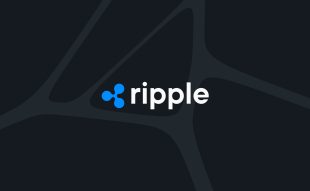Join Our Telegram channel to stay up to date on breaking news coverage
The current outlook of the crypto market display signs of recovery following the recent decline, particularly on June 14 and 15.
Major tokens like Bitcoin and Ethereum have witnessed improvements in their prices, experiencing slight increases of 1.50% and 0.50%, respectively. These positive price movements indicate growing confidence among investors.
Several factors contribute to the positive sentiment in the market today. One notable development is Fidelity’s potential filing of a Bitcoin spot ETF.
If approved, this could open up new avenues for institutional investment in Bitcoin, further solidifying its position as a top asset class.
However, it is important to note that there are also negative events occurring in the crypto space that investors should note, such as scam attacks and phishing exploits.
As such, it is challenging to predict the future of digital assets, particularly in the remaining months of this year. Therefore, investors must conduct thorough research, stay informed, and make decisions based on risk tolerance and investment goals.
Ongoing Digital Asset Market Trend
The digital asset market is currently influenced by activities impacting token prices and investor sentiment.
Despite these dynamics, the overall crypto market capitalization increased slightly by 0.76% in 24 hours, reaching $1.07 trillion at press time.
Current status of the Bitcoin and Ethereum markets
One factor contributing to this slight increase is Bitcoin’s growing trading volume since June 18.
Two days back, BTC trading volume stood at $9,565,695,129. But today, June 20, it has surged to over $15 billion, representing a 24-hour growth of 57.06%.
This surge in trading volume indicates increased market activity and can impact token prices. As of now, Bitcoin is trading at $26,760, indicating stability in its price.
On the other hand, Ethereum has maintained its long-standing price range of around $1,700, which suggest a degree of investor confidence and stability in the market.
Stablecoin markets
The stablecoin market has performed particularly well, with its trading volume surging by more than 44% over the last 24 hours, reaching an impressive $27,354,898,199.
Generally, these assets are designed to maintain a stable value relative to a specific asset, often the US dollar, making them attractive for investors seeking stability within the volatile crypto market.
At the beginning of the year, the market cap of stablecoins was approximately $134.4 billion, according to data from CoinGecko. However, it has now declined to $128.5 billion, as reported by CoinMarketCap.
Decentralized finance market
The decentralized finance (DeFi) market has also witnessed significant gains in its trading volume, experiencing a 27.04% increase in the past day and holding a volume of over $1.7 billion.
Dai (DAI) currently holds the top position based on market cap within the DeFi market, showcasing its popularity and influence.
NFT market
The non-fungible token (NFT) market has also shown some gains, with a 5.68% increase in the past 24 hours. It currently holds a market cap of $3,579,889,002 and a trading volume of $28,534,524.
Notably, these tokens have recently gained significant attention, attracting artists and investors due to their unique and indivisible nature.
Chart Forecast Based On Technical Analysis shows Bullish Trend Ahead for the BTC

The leading crypto assets is showing promising signs of a bullish trend in its price forecast. The token has been resilient in recent market conditions as its price continues to fight above the 50-day and 200-day Moving Averages (MA).
This positively indicates Bitcoin’s price momentum and suggests a potential upward trajectory. One technical analysis tool that supports the bullish sentiment is the Moving Average Convergence Divergence (MACD).
Currently, the MACD line is positioned above the signal line, signaling a bullish crossover. This is often interpreted as a buy signal by traders and indicates the potential for further price appreciation.
Furthermore, the Relative Strength Index (RSI) stands at 55.19, indicating a healthy balance between buying and selling pressure.
With the RSI still far from the overbought region typically represented by a reading of 70, there is room for further upward movement before Bitcoin potentially becomes overvalued. These technical indicators collectively suggest a positive outlook for Bitcoin’s price.
Latest Developments In The Digital Asset Sphere
The recent happenings in the crypto industry have significantly impacted token prices, leaving investors and traders uncertain about the market’s long-term trajectory. Regulatory developments play a crucial role, with government actions and statements influencing market sentiment.
Potential bans or increased regulations can trigger negative sentiment and price declines, while clarity and adoption can have positive effects.
Market manipulation and illegal activities have also influenced token prices negatively. Instances of fraudulent schemes and security breaches erode investor trust and contribute to uncertainty in the market.
UK House of Lords accept Financial Services and Markets bill
In a recent event in the digital asset industry, the UK House of Lords has given its approval to a landmark bill aimed at regulating the digital asset sector.
The bill, introduced to the Parliament several months ago, has garnered widespread support from members of the House of Lords, highlighting the growing recognition of the need for robust regulatory measures in the crypto assets space.
The proposed legislation primarily focuses on establishing comprehensive standards for the crypto sector and overseeing the usage of stablecoins.
It seeks to bring stability and transparency to the market, addressing concerns regarding consumer protection, financial stability, and illicit activities.
By approving the bill, the House of Lords has taken a crucial step towards ensuring the integrity and accountability of the crypto industry within the UK.
Results of the approved bill
The legislation will now proceed to the final reading stage, where the House of Commons will have the authority to make any necessary amendments.
This process allows for a comprehensive discussion between the two chambers of the Parliament, intending to reach a mutually agreeable final version of the bill.
Once the bill receives final approval from both the House of Lords and the House of Commons, it will require the signature of King Charles III to become official.
The monarchy’s involvement underscores the significance and impact of this legislation on the nation’s financial landscape.
With the implementation of this legislation, the UK aims to position itself as a global leader in cryptocurrency regulation, fostering innovation while ensuring the necessary safeguards are in place.
New Central Bank digital asset platform from IMF
In an innovative move, the International Monetary Fund (IMF) has revealed its plans to develop a global cryptocurrency platform to promote financial inclusion and ensure stability in the digital currency realm. This initiative marks a significant milestone in the ongoing evolution of the financial landscape.
The IMF’s decision to venture into the world of digital assets stems from its recognition of the transformative potential of digital currencies, particularly Central Bank Digital Currencies (CBDCs).
These digital representations of fiat currencies can revolutionize financial systems by providing individuals who are currently marginalized with access to formal financial services.
By developing a global platform, the IMF seeks to foster an inclusive environment where financial services are readily available to everyone, regardless of their geographical location or socioeconomic background.
This platform will catalyze financial inclusion, enabling individuals currently excluded from traditional banking systems to participate in economic activities and improve their livelihoods.
Moreover, the IMF’s global CBDC platform aims to address concerns related to financial stability, data privacy, legal challenges, and cyber threats that have emerged with the rapid growth of decentralized cryptocurrencies.
By establishing a universal regulatory framework for digital currencies, the IMF intends to mitigate these risks and ensure the safe and secure adoption of CBDCs worldwide.
Kristalina Georgieva’s emphasis on international collaboration
During a recent conference, Kristalina Georgieva, the Managing Director of the IMF, emphasized the importance of a collective approach toward digital currencies.
She stressed the need for international collaboration and coordination among central banks to avoid fragmented initiatives that could create vulnerabilities in the financial system.
The development of a global cryptocurrency platform under the auspices of the IMF represents a major step toward achieving this collective vision.
By leveraging its expertise and influence in the global financial landscape, the IMF aims to foster a seamless and interoperable system that transcends national boundaries.
The IMF’s announcement has garnered significant attention and support from financial institutions, central banks, and policymakers worldwide.
Creating a unified global platform is seen as a crucial milestone in shaping the future of finance, promoting financial inclusion, and fortifying the stability of the global economy.
New node version launched on Cardano’s mainnet
Cardano, one of the leading blockchain platforms, has recently rolled out a new node version on its mainnet, marking a significant milestone in its ongoing development.
The latest release, version 8.1.1, introduces a range of improvements aimed at enhancing the platform’s overall functionality and user experience.
One of the key updates brought by Node 8.1.1 is the distribution of computations throughout the entire epoch, departing from the previous focus on epoch boundaries.
This strategic modification facilitates smoother transitions between periods, or epochs, on the Cardano blockchain. By distributing computations more evenly, the update aims to streamline operations and provide a more seamless experience for users.
More features were pointed out
Additionally, Node 8.1.1 addresses important concerns related to the domain name system (DNS) and peer-to-peer connections (P2P).
By resolving these issues, Cardano aims to enhance the efficiency and reliability of its mainnet, making it a more attractive platform for both existing and new users.
Notably, the release of Node 8.1.1 is yet another testament to the team’s commitment to refining their blockchain technology and providing users with the best possible experience.
In light of the significant enhancements introduced by Node 8.1.1, the Cardano team strongly urges all stake pool operators (SPOs) to update to the latest version.
The team emphasizes the readiness of Node 8.1.1 for mainnet usage and highlights the substantial improvements it brings to the platform.
SEC-Ripple case updates – Stuart Alderoty reveals impartiality regulations on SEC employees
In a startling revelation, Stuart Alderoty, a top lawyer representing Ripple, has raised concerns about potential bias among U.S. Securities and Exchange Commission (SEC) employees.
Citing federal law, specifically 5 CFR 2635.101(b)(14), which mandates SEC employees to act impartially and maintain the appearance of impartiality, Alderoty has questioned whether the commission’s staff members are adhering to these regulations.
His comments come at a critical juncture when the SEC’s position on various cryptocurrencies is under scrutiny.
The root of the matter revolves around the “Hinman emails,” a collection of correspondences between William Hinman, the former director of the SEC, and other SEC staff members.
The Hinman’s email factor
These emails were prepared in the lead-up to Hinman’s highly publicized speech in June 2018, where he discussed the classification and regulation of digital assets.
The Hinman emails shed light on the internal discussions within the regulatory agency, particularly regarding the application of the Howey Test.
This test is a critical legal framework used to determine whether an asset qualifies as a security under U.S. law.
Despite reservations expressed by some SEC staff members, Hinman proceeded with his speech, categorizing Bitcoin and Ethereum as non-securities.
The timing of the Hinman email release relates to the ongoing legal battle between Ripple and the SEC.
Ripple is currently facing accusations of selling unregistered securities. In their defense strategy, Ripple’s legal team has sought access to these emails, which they believe could reveal crucial information about potential biases within the SEC’s approach to cryptocurrency regulation.
Alderoty’s recent tweets have further amplified Ripple’s concerns, drawing attention to possible irregularities in the SEC’s dealings.
Scam warning to the XRP community
In a recent occurrence, members of the XRP community have been urged to exercise caution and remain vigilant due to an ongoing scam attack targeting unsuspecting individuals.
Reports of fraudulent schemes have emerged designed to exploit XRP holders and potentially drain their digital assets. Prominent blockchain educator and advocate Jacob Canfield relayed crucial information regarding this scam attack.
Canfield, who is known for his expertise in the field, revealed that a phishing attack targeted him after receiving an email claiming to be from the Ripple team.
The email falsely advertised an XRP allocation program, luring holders into providing their personal information and potentially compromising their accounts.
Recognizing the seriousness of the situation, Canfield issued a warning to the XRP community, urging them to exercise extreme caution and stay alert. He emphasized that emails with the subject line “the allocation program” should be considered fake and malicious.
Canfield clarified that Ripple is not conducting such allocation programs, and any email claiming otherwise should be treated as a potential scam.
Phishing scams and attacks in the crypto sphere
Phishing attacks and scams imitating reputable crypto organizations have become increasingly prevalent.
These cybercriminals are driven by the desire to steal users’ digital assets and personal data. The risk of unauthorized access to XRP accounts is a pressing concern, as it puts the funds of unsuspecting users at great risk.
To add credibility to their fraudulent scheme, the scammers promoted the importance of self-custody and ownership of private keys, claiming it to be a vital aspect of the program.
However, Canfield advised against sharing one’s 24-word recovery phrase with anyone and strongly discouraged entering it into any applications or websites, as these actions could expose individuals to potential scams.
Join Our Telegram channel to stay up to date on breaking news coverage


